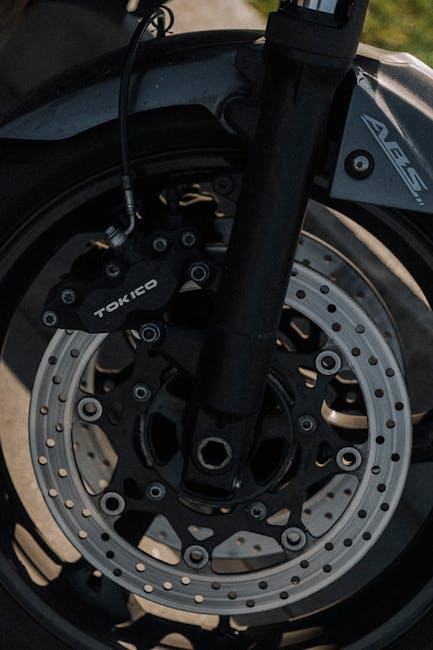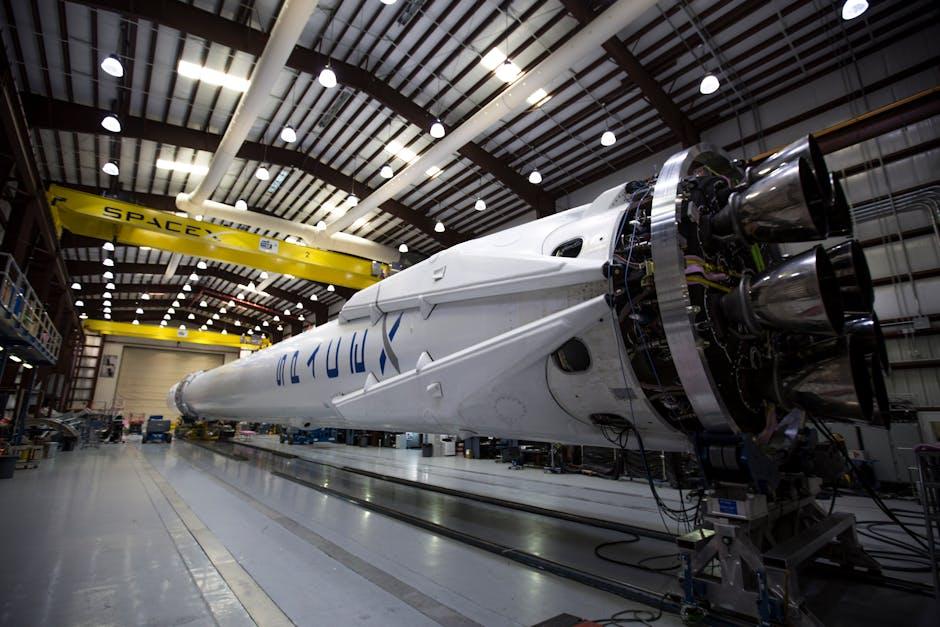In the split second it takes to stop a car, countless mechanical miracles work behind the scenes to keep passengers safe. Among these unsung heroes is the Anti-lock Braking System, commonly known as ABS—a technology that has transformed the way vehicles come to a halt. But what exactly happens when you slam on the brakes and hear that familiar pulsating sensation underfoot? This article unpacks the inner workings of ABS, revealing the intricate dance between sensors, hydraulics, and electronic controls that prevents wheels from locking up and helps drivers maintain control, especially in critical moments. Join us as we explore the science and engineering behind one of modern driving’s most essential safety features.
Table of Contents
- Understanding the Core Components of ABS and Their Roles
- The Science Behind ABS Functionality in Emergency Braking
- How ABS Enhances Vehicle Stability and Control on Different Surfaces
- Common Misconceptions About ABS Performance and Limitations
- Maintenance Tips to Keep Your ABS System Reliable and Effective
- Choosing the Right ABS Technology for Your Vehicle Type
- Q&A
- In Retrospect

Understanding the Core Components of ABS and Their Roles
At the heart of an Anti-lock Braking System lies a sophisticated network of components working seamlessly to prevent wheel lock-up and maintain vehicle control during sudden braking. The wheel speed sensors continuously monitor the rotation speed of each wheel, sending real-time data to the system’s central brain—the Electronic Control Unit (ECU). When the ECU detects a wheel slowing down too rapidly, indicating a potential skid, it instantly signals the hydraulic modulator to adjust brake pressure. This delicate balance ensures that each wheel maintains optimal traction without locking, even on slippery surfaces.
Understanding the components in isolation helps, but appreciating their collaboration fully reveals the genius of ABS. Key parts include:
- Wheel Speed Sensors: Provide constant feedback on wheel velocity.
- Electronic Control Unit (ECU): Processes sensor input and commands pressure adjustments.
- Hydraulic Modulator: Regulates brake fluid pressure to prevent lock-up.
- Brake Actuators: Mechanically apply the braking force.
| Component | Role | Effect on Safety |
|---|---|---|
| Wheel Speed Sensors | Detect wheel rotation speeds | Enables timely response to skidding risks |
| Electronic Control Unit | Analyzes sensor data | Ensures accurate brake modulation |
| Hydraulic Modulator | Controls brake pressure | Prevents wheel lock-up |

The Science Behind ABS Functionality in Emergency Braking
At its core, ABS relies on a sophisticated network of sensors, hydraulic valves, and a microprocessor controller that work in harmony to prevent wheel lock-up during sudden braking. The system continuously monitors the rotational speed of each wheel through ABS sensors, detecting any instance where a wheel slows down too abruptly, indicating it is about to lock. When this is sensed, the ABS controller momentarily reduces brake pressure to that wheel by modulating hydraulic valves, allowing it to regain traction without losing control. This rapid pulsing effect — often imperceptible to drivers — ensures optimal braking force while maintaining steerability, a critical factor in emergency situations.
The interaction between ABS components can be broken down into a simple process:
- Detection: Wheel speed sensors track real-time rotation.
- Processing: The ABS controller compares speeds to identify lock-up risk.
- Modulation: Hydraulic valves adjust brake pressure accordingly.
- Repetition: This cycle repeats multiple times per second for consistent control.
| ABS Component | Function |
|---|---|
| Wheel Speed Sensor | Monitors rotational speed continuously |
| ABS Controller | Processes sensor data and decides pressure adjustments |
| Hydraulic Valves | Modulate brake fluid pressure swiftly and precisely |

How ABS Enhances Vehicle Stability and Control on Different Surfaces
When driving on varying surfaces such as wet roads, gravel, or ice, maintaining vehicle stability and control becomes paramount. ABS plays a crucial role by preventing the wheels from locking up during sudden braking, allowing the driver to steer effectively while reducing the risk of skidding. This system rapidly modulates brake pressure by pulsing it multiple times per second, adapting to the grip levels of each surface. As a result, it maximizes traction, ensuring the tires maintain contact with the road, which is essential for safe maneuvering and avoiding obstacles.
The benefits of ABS span across different terrains and conditions, from dry asphalt to slippery mud. Here are some key ways it enhances vehicle handling:
- Improved Steering Control: ABS prevents wheel lockup, allowing continuous steering input to avoid accidents.
- Shorter Stopping Distances: On many surfaces, modulated braking increases grip without causing slide.
- Adaptive Pressure Management: Adjusts brake pressure dynamically for each wheel depending on surface irregularities.
- Enhanced Vehicle Stability: Controls and stabilizes the car’s motion by preventing skidding and loss of control.
| Surface | ABS Benefit | Effect on Stability |
|---|---|---|
| Wet Road | Prevents hydroplaning-caused lockups | Maintains steering for hazard avoidance |
| Gravel | Modulates pressure to maintain tire grip | Reduces skidding and loss of control |
| Ice | Allows slight wheel spin for directional control | Enhances traction and directional response |
| Dry Asphalt | Maximizes braking efficiency without sliding | Ensures stable, controlled stops |

Common Misconceptions About ABS Performance and Limitations
One widespread myth is that ABS allows a vehicle to stop faster in every situation. While ABS significantly improves control and steering during emergency stops on slippery surfaces, it doesn’t necessarily reduce stopping distance on dry pavement. Instead, its primary role is to prevent wheel lockup, enabling drivers to maintain maneuverability. Another common misconception is that ABS can replace safe driving habits; in reality, it’s a supportive technology designed to assist, not guarantee, accident avoidance.
Furthermore, some believe ABS is infallible across all road conditions. However, it has limitations, especially in loose gravel or deep snow, where locked wheels may provide better traction for stopping. Misunderstandings also abound about ABS requiring a different braking technique—while urgent and firm pressure is advisable, “pumping” the brakes manually is unnecessary as the system modulates brake force automatically.
- ABS does not shorten stopping distance in all conditions.
- ABS helps maintain steering control during hard braking.
- Driving skill and road awareness remain essential.
- ABS performance varies with road surface types.
| Condition | ABS Benefit | Limitations |
|---|---|---|
| Wet pavements | Enhanced control and reduced skidding | Stopping distance may or may not improve |
| Loose gravel | Maintains steering, but sometimes wheel lock aids stopping | ABS may slightly increase stopping distance |
| Dry surfaces | Prevents wheel lock under emergency braking | Does not always reduce stopping distance |

Maintenance Tips to Keep Your ABS System Reliable and Effective
Regular upkeep is crucial to ensure your ABS system functions at its peak when you need it most. Start by keeping an eye on your brake fluid levels—low fluid can impair ABS responsiveness. Additionally, monitor your brake pads for wear; worn pads can reduce the system’s ability to modulate braking pressure effectively. Cleaning wheel sensors gently with a soft cloth can prevent dirt build-up that might otherwise cause false ABS alerts or malfunctions. Remember, a well-maintained ABS doesn’t just protect your car’s mechanics; it safeguards your driving experience.
Consider these simple practices to enhance ABS longevity:
- Check tire pressure regularly: Uneven tire pressure can interfere with wheel speed sensor accuracy.
- Inspect wiring harnesses: Look for signs of wear or corrosion which can disrupt ABS signals.
- Schedule professional diagnostics: Modern ABS modules often require computer scans to detect hidden issues early.
| Maintenance Task | Recommended Frequency | Impact on ABS |
|---|---|---|
| Brake Fluid Replacement | Every 2 years | Prevents sensor corrosion & hydraulic failure |
| Tire Pressure Check | Monthly | Ensures accurate sensor readings |
| Wheel Sensor Cleaning | Every 6 months | Reduces false ABS activation |

Choosing the Right ABS Technology for Your Vehicle Type
When selecting an ABS system tailored to your vehicle, understanding the interplay between the technology and vehicle dynamics is crucial. Passenger cars typically benefit from a four-channel ABS, which independently controls each wheel’s braking pressure, optimizing stopping power and stability during emergency braking. On the other hand, larger vehicles like trucks or SUVs might require more robust systems such as three-channel ABS or systems integrated with traction control to manage additional weight and variable traction conditions effectively.
Consider these key factors when choosing ABS technology:
- Vehicle weight and size: Heavier or larger vehicles demand more complex ABS modulation.
- Terrain and driving conditions: Vehicles primarily used on rough or slippery surfaces often need ABS optimized for off-road or wet conditions.
- Integration with other systems: Some ABS units are designed to work seamlessly with electronic stability control (ESC) and traction control systems (TCS), enhancing overall safety.
| Vehicle Type | Recommended ABS Type | Key Benefit |
|---|---|---|
| Compact Cars | Four-Channel ABS | Precise wheel control for agile braking |
| SUVs & Light Trucks | Three or Four-Channel with Traction Control | Enhanced stability on uneven terrain |
| Heavy Trucks | Multi-Channel ABS with Load Sensing | Improved braking under heavy load |
Q&A
Q&A: ABS (Anti-lock Braking System) – How It Works
Q1: What exactly is ABS?
A1: ABS, or Anti-lock Braking System, is an automotive safety feature designed to prevent wheels from locking up during sudden or hard braking. By doing so, it helps maintain steering control and reduces the risk of skidding, especially on slippery surfaces.
Q2: Why is wheel lock-up such a problem?
A2: When a wheel locks up, it stops rotating and starts to skid along the road surface. This skidding drastically reduces tire grip and prevents the driver from steering effectively, increasing the likelihood of accidents.
Q3: So how does ABS know when to intervene?
A3: ABS uses sensors on each wheel that constantly monitor wheel speed. When the system detects that a wheel is about to stop spinning due to heavy braking, it springs into action to modulate the brake pressure.
Q4: What happens inside the system during ABS activation?
A4: ABS rapidly pulses the brake pressure—often many times per second—on the affected wheels. This pulsing prevents the wheels from locking up, allowing them to keep rotating while still slowing the vehicle down effectively.
Q5: Can drivers feel when ABS is working?
A5: Yes, when ABS kicks in, drivers usually feel a pulsating or vibrating sensation through the brake pedal. This is normal and indicates the system is actively preventing wheel lock-up.
Q6: Does ABS make my vehicle stop faster?
A6: ABS doesn’t necessarily shorten stopping distances on all surfaces, but it dramatically improves control during emergency braking. On slippery or uneven roads, it often helps reduce stopping distances by maintaining optimal tire grip.
Q7: Are there any limitations to ABS?
A7: While ABS greatly enhances safety, it’s not a magic bullet. It cannot defy physics—drivers still need to brake early and steer carefully. Wet, icy, or loose surfaces can still be challenging, and ABS won’t prevent collisions if speeds are too high.
Q8: Is ABS standard in all modern vehicles?
A8: Nearly all modern cars come equipped with ABS as standard safety equipment. It’s recognized globally as a vital technology that has significantly reduced accidents and saved countless lives.
Q9: How do I maintain my ABS system?
A9: ABS requires little direct maintenance, but it’s important to keep your brake system in good condition. Regular brake checks, maintaining proper tire pressure, and ensuring wheel speed sensors stay clean and functional will keep ABS ready when you need it.
Q10: Can I turn off ABS if I want to?
A10: While some vehicles provide a way to disable ABS—usually meant for specific off-road conditions—it’s generally best to keep it active. ABS is designed to assist in emergency situations and turning it off can increase the risk of losing control during hard braking.
ABS is like a vigilant guardian for your brakes, quietly working behind the scenes to keep you safe when things suddenly go wrong on the road. Understanding how it functions helps you appreciate this clever technology that many drivers take for granted every day.
In Retrospect
In the grand symphony of automotive safety, the ABS plays a crucial, often unsung, role—silently orchestrating control and stability when the unexpected strikes. By preventing wheels from locking during sudden braking, this system not only preserves traction but also empowers drivers with confidence and precision. Understanding how ABS works offers a deeper appreciation for the technology that quietly stands guard between you and the road’s surprises. As vehicles continue to evolve, the principles behind ABS remind us that sometimes, the smartest innovations are those that simply help us stop—just in time.
